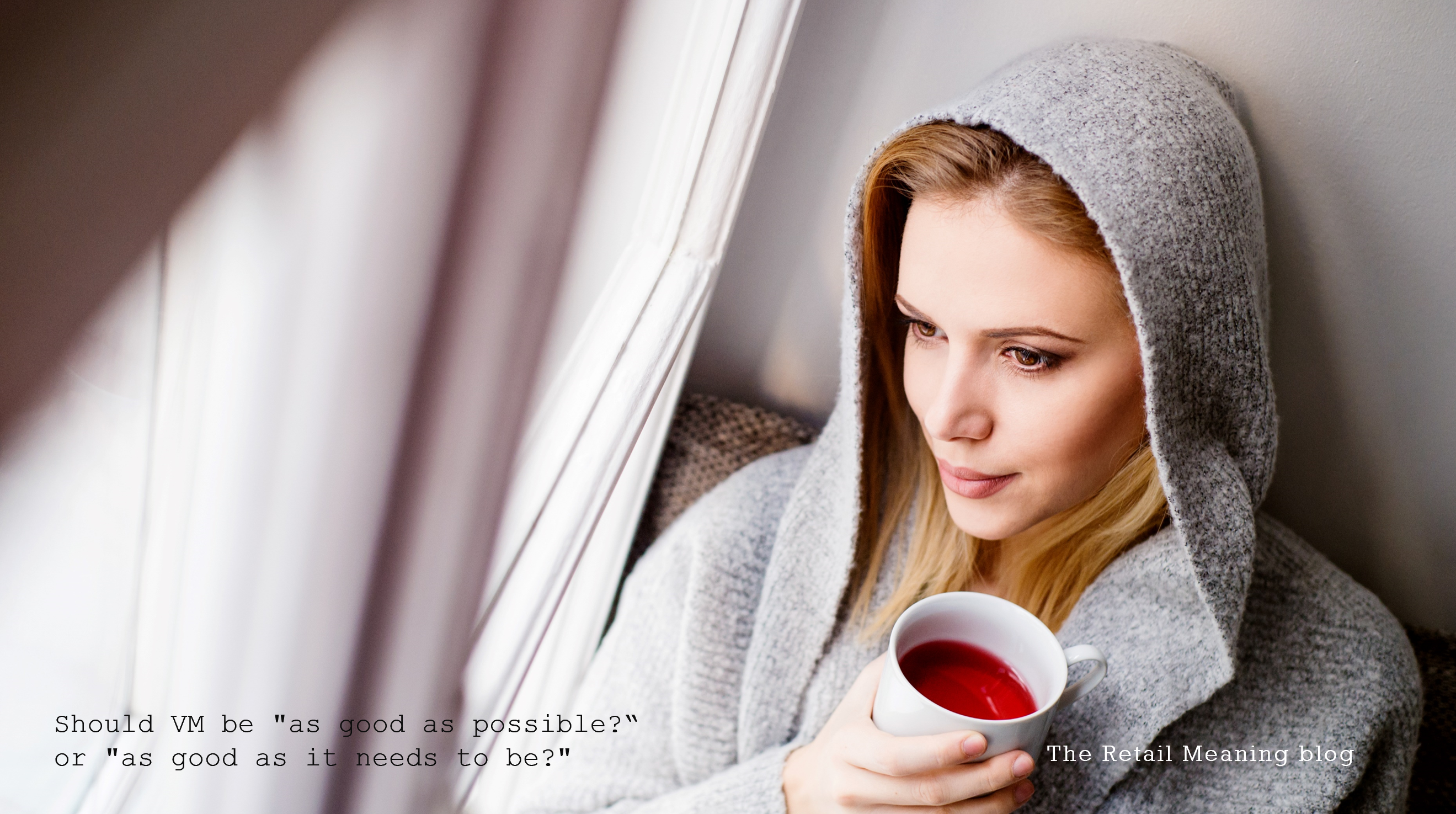As a firm believer in the mantra “Things should alway be as good as possible” I have always been a little unnerved by those who work by the alternative principles of “things only have to be as good as they have to be”
The problem with the second way of viewing visual merchandising standards is that in the world of visual merchandising and store experience there is a lack of absolute knowledge on what “they have to be!” is.
The result across a thousand retail boardrooms is a perpetual argument regarding the role of visual merchandising and particularly the elements which constitute the discipline, as to their worth, their impact on sales, their ROI and ultimately their value to a retailer. The 2 camps sit across a valley of ignorance from “VM is an essential” to “VM is a luxury.” And in the cost efficient times in which we live, the ability to justify the elements of VM and categorically prove that “they have to be good” with the resources in place to ensure that “they are good!” becomes more pressing than ever.
We all have experiences, and hunches, and personal trials where initiatives increased sales yet to an often doubting audience these are just here-say.
Ironically, the truth can be found with a discipline which in itself struggles to break free from the label of “luxury” and implant itself firmly in the necessity camp. Even the mention of the words video analytics will instantly have half of retailers holding their head in their hands.
But as someone who has been equally dubious of technology in stores but equally fascinated for many years by the retail bible of Paco Underhill’s – “Why we Buy!” the jigsaw has fallen into place. VMAnalytics simply gives proof to the principles of shopper psychology, in an unforeseen way, with unforeseen accuracy and scope than could ever have been envisaged at the time of the birth of customer behaviour and Envirosell.
The magic of VM analytics used by someone who knows what they are looking at, and looking for, is that the impact of VM elements from space location, display principles, POS, mannequins, props, fixture types and any other display element you care to mention can be measured in how it attracts passing traffic, how it engages customers at a specific place, how long it engages them for, and whether it converts the customer into a purchaser.
Through precise testing we can know unquestionably what is the driver of improved sales and how it impacted the journey to sale – the display, the POS, the bust or a combination of all. We learn where to invest our money and what level of investment is justified by the return.
The bad press of VMAnalytics comes from non-visual people pointing blindly in hope of revelations. The blind stay blinded for life with analytics.
Whilst there are undoubtedly principles and common experiences across the industry the fact is that every retailer will find different success with different VM elements, and indeed will judge the particular element “essential” or “luxury” upon different criteria. And at the risk of belittling analytics we should always take into account that shopping is emotional and critically buying is emotional. Having said that, correctly positioned and interpreted analytics measure the commercial impact of emotional behaviour. Now that’s a holy grail we’ve all been searching for.
So, bite the bullet, run the risk of being wrong, and accept the reality that not all visual elements of the store experience are essential for all retailers to be commercial, or even emotionally viable to a customer.
Perhaps at the end of the day the two doctrines are not that far apart with “As good as possible” in fact being “as good as they have to be!” but importantly where correctly interpreted VM Analytics give a clear mandate on which VM elements need to be “as good as possible” and in fact which elements of the store experience we need at all.
Don’t compromise visual merchandising standards, just prioritise your scope.
